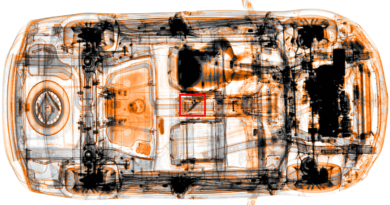Kiosk systems – the key to border control?
Over the last two decades, secunet has emerged as an innovative market leader in Europe offering mature and future-proof solutions for electronic identity protection as well as for reliable and efficient verification. e.g. ABC gates and self-service kiosk for secure and convenient biometric border control.
It may have been an unprecedented year for travel, but as borders start to re-open and flights resume, robust border control systems that are quick and easy to use remain essential. And while self-service technology has long been an essential part of the travel experience, kiosk systems will now play a pivotal role internationally to securely and efficiently manage new border control procedures.
EES
In Europe, deployment of kiosks is being driven by the rollout of the common biometric Entry/Exit System (EES), which all travellers from third countries will need to register with from 2022 onwards as part of the European Parliament’s Smart Borders Initiative. When entering the Schengen area via land, sea and air borders, Third Country Nationals (TCN) will be required to register with four fingerprints and facial image. This biometric data will be stored in the EES along with the traveller’s biographical and other information taken from their travel document.
While the policy will strengthen the EU’s borders, it will be complex and time consuming, presenting first-line border control officers with new challenges related to how they can most efficiently use their time to focus on the most suspicious and high-risk travellers. Additionally, if queues build up at the border control point, it could affect transfer times, baggage collection and even flight schedules.
One answer is to deploy automated and self-service kiosks. These have the advantage of optimising the passenger flow while also compensating for the extra time needed due to the additional step of biometric acquisition at the border.
When a traveller is first registered, their biometric data is checked against an estimated 300 million records to ensure that they have not already been registered under a different identity, a process known as ‘deduplication’. This can take between 20 and 30 seconds because of the volume of data that has to be searched. Self-service systems can compensate for the long response time of the central EES system by allowing prior data registration and breakdown of the process times, as the time during which the passenger is moving to the border control desk can be used for the EES queries. Additionally, kiosks can also be used both for first-time registration and to help optimise processes for return travellers.
By enabling pre-enrolment of biometric data and prior interviewing of incoming travellers, kiosks massively reduce the workload of the border guards performing these controls. Language barriers can be overcome by conducting the entry interview at the kiosk in the traveller’s native language with the answers being directly translated for the official. With their integrated security mechanisms, kiosks also guarantee consistent data quality for the border control process. They ensure that the facial images captured are of a consistent quality and meet the requirements of ISO 19794-5:2011 and that fingerprints comply with NFIQ 2.0. State- of-the-art liveness detection, monitoring functions and detection of spoofing attacks for face and fingerprint scans complete the high-level security line-up.
Cost
Automated systems represent good value for money. When considering total cost of ownership, kiosks often require lower levels of investment than traditional infrastructure and staffing models, are more flexible and easily scalable, and are more cost-effective in the long run.
Space
Border control points have long been concerned with how they can make most efficient use of space. Kiosks are highly flexible because the waiting areas of self-service systems and stationary desks can be kept separate from each other. Also, because of their integrated monitoring functions, they do not need to be within view of the border control desks and can be configured in the most suitable way for a given location, such as next to each other in a row, at an angle in the middle of a room, back to back or in a circle.
System requirements
To ensure the maximum benefits are achieved from the use of kiosks, the system must be designed specifically for border control applications and satisfy all EES requirements, as well as performing quickly, securely, reliably and to a high standard. Compliance with ISO 19794-5:2011 and NFIQ 2.0 is essential for facial image acquisition and fingerprint capture.
Another important system element is the use of anti-circumvention security based on presentation attack detection (PAD) technology. This will prevent spoofing attacks by recognising forged and falsified identity documents, spoofed faces or fake fingerprints, as well as other types of attack.
The kiosk system should also feature additional surveillance cameras and smart security functions that detect inadmissible or suspicious situations, so that passengers can be monitored conveniently from a distance.
Kiosks are a crucial element of Europe’s smart border control infrastructure. When deployed correctly they benefit not only the border control authorities, but also all other stakeholders, from airlines, airport and infrastructure operators to the travellers themselves.




